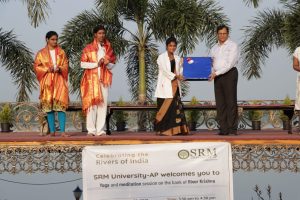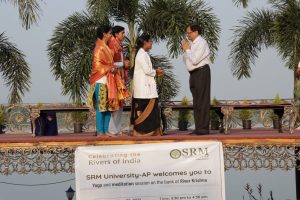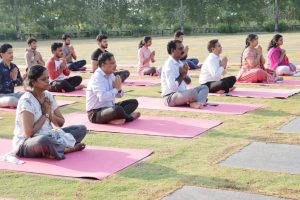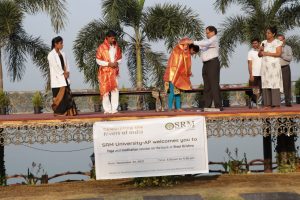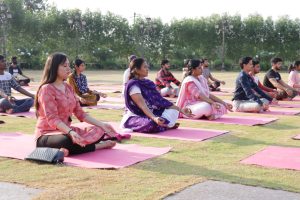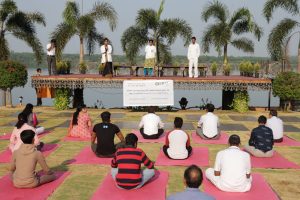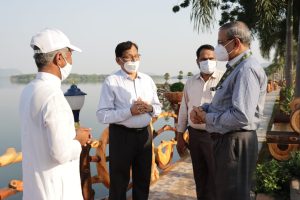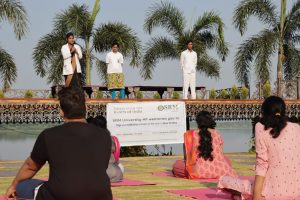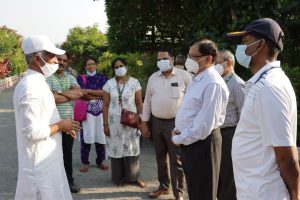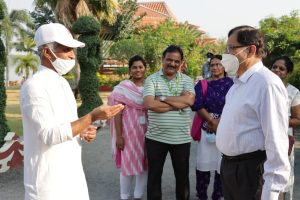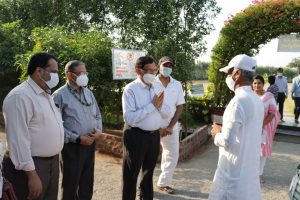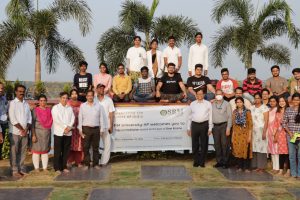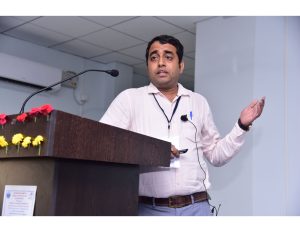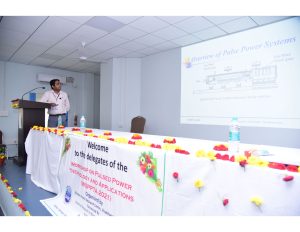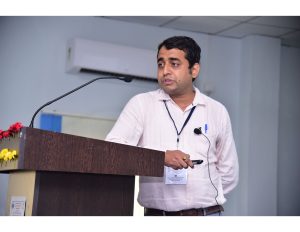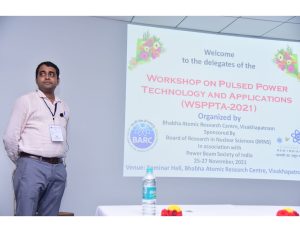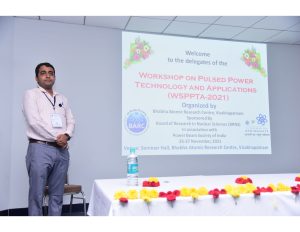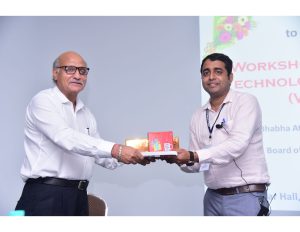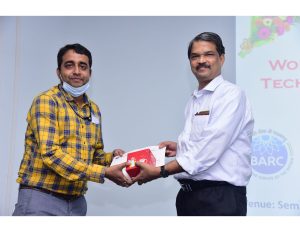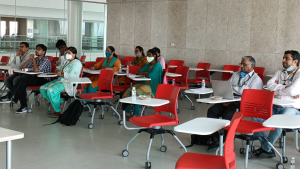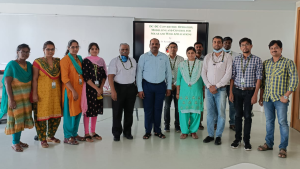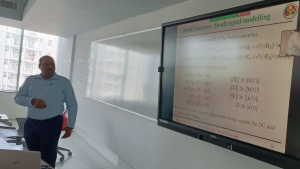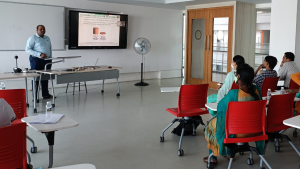Dr Inbarasan Muniraj receives SERB-SRG-DST grant to improve low light imaging
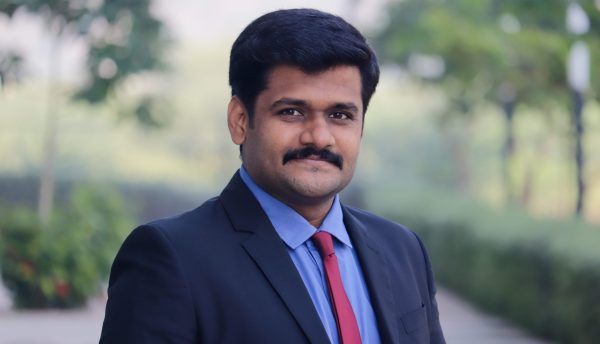 Imaging various three-dimensional (3D) objects under ultra-darkness is a fascinating process. However, our conventional cameras are not intelligent enough to capture the experience. Dr Inbarasan Muniraj, Assistant Professor in the Department of Electronics and Communications Engineering, is all about changing that.
Imaging various three-dimensional (3D) objects under ultra-darkness is a fascinating process. However, our conventional cameras are not intelligent enough to capture the experience. Dr Inbarasan Muniraj, Assistant Professor in the Department of Electronics and Communications Engineering, is all about changing that.
Dr Inbarasan Muniraj’s project, “Sensing in the dark: An automated off-focused points detection and removal from the photons starved 3D volumetric dataset”, has received a SERB-SRG-DST of Rs. 20.8 lacs for a two-year duration.
Dr Muniraj describes his project as such,
“Assume that there is no external light, e.g., a dark room, when you capture an image using a camera (mobile or DSLR). Often, the captured images will look dark, and it is too difficult tointerpret anything from the picture. However, algorithms have been developed to make use of the low scattered photons from a scene to estimate the equivalent normal intensity image. We use one such technique to generate photons-counted images for a 3D object and perform a 3D image reconstruction. One of the major problems in 3D reconstruction is off-focused points which look blurry and redundant. Therefore, in this project, we aim to employ a deep learning technique to smartly recognise and remove the off-focused points from a reconstructed 3D scene under photons starved conditions.”
Dr Inbarasan Muniraj is the sole investigator of this project. According to him, there are much more extensive social implications associated with this project. To note, this technique can be extended for various applications such as night vision, security, and biomedical imaging etc.
- Published in Departmental News, ECE NEWS, News, Research News
SRM University-AP takes part in Celebrating the Rivers of India
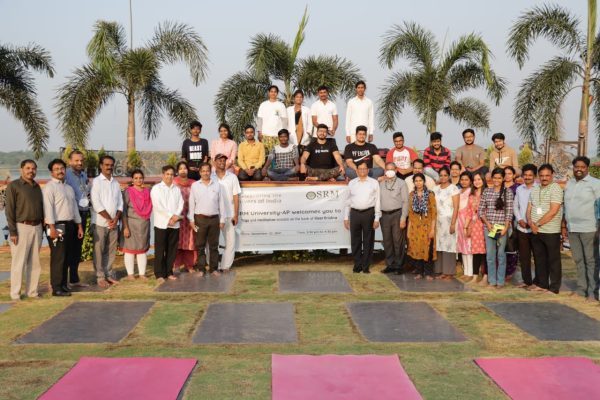 The students, faculty, and other staff members of SRM University-AP spent a memorable evening on the banks of River Krishna as a part of Celebrating the Rivers of India.
The students, faculty, and other staff members of SRM University-AP spent a memorable evening on the banks of River Krishna as a part of Celebrating the Rivers of India.
As a part of Azadi ka Amrit Mahotsav, the Ministry of Jal Shakti, Government of India, organises various programmes on the theme Celebrating the Rivers of India. This revitalising excursion organised by the Department of Student Affairs at SRM AP was held in honour of the fourth largest river at Manthena Satyanarayana Arogyalayam, Thullur, Vijayawada.
Dr Manthena Satyanarayana introduced the gathering to the practice of naturopathic medicine which is based on modern and traditional, scientific, and empirical methods. Dr Gangadhar, Ms Chaitanya and Dr Prema led a short rejuvenating yoga and meditation session for the participants.
The practitioners at the Arogyalayam were honoured with stoles and mementos as tokens of appreciation. Dr R Premkumar-Registrar, Directors of various departments, and Deans of schools were present on the occasion.
Arogyalayam Research Centre advocates protecting health by increasing the level of immunity and enhancing life-force (praana sakti) amidst very pleasing natural environs, with the help of experts and experienced personnel, under the overall supervision of Dr Manthena Satyanarayana.
“The waterfront and the refreshing greenery of nature heals our mind and soul in this stressful modern-day life”, said Prof V S Rao, Vice-chancellor, SRM University-AP. The event, organised for Celebrating the Rivers of India, gave the participants an opportunity to unwind, relish the view of boats gliding smoothly on the river, enjoy the lush bushes growing all around, and do yoga in the delightful breeze with serene atmosphere.
- Published in News
Invited talk at Workshop on Pulse Power Technology and Applications (WSPPTA-2021)
Dr Somesh Vinayak Tewari delivered an invited talk on “High Power Closing Switches” on November 25, 2021, during the Workshop on Pulse Power Technology and Applications (WSPPTA-2021) held from November 25, 2021, to November 27, 2021, at Bhabha Atomic Research Centre (BARC) Facility, Visakhapatnam, sponsored by Board of Research in Nuclear Sciences (BRNS), Department of Atomic Energy, Government of India in association with Power Beam Society of India.
The workshop served as a platform for pedagogical presentations, discussions on intricacies of pulsed power technology and mutual interactions among young researchers, engineers and students from academia and applied research laboratories and talks were delivered by scientists of BARC, IPR, DRDO, CEERI, professors from IIT, IISc and experts from industry.
Dr Tewari delivered a talk on “High Power Closing Switches”, highlighting the working principle, mechanism, and applications of vacuum switches like ignitron, thyratron, pseudo spark gap, gas-filled spark gap switches, liquid and solid dielectric switches, magnetic switches, and modern-day semiconductor switches.
After his talk, Dr Tewari was highly appreciated and felicitated by Dr D. C. Pande, Dr Raja Ramana Distinguished Fellow of DRDO. The proceedings were compiled in the form of book chapters and circulated to participants.
- Published in Departmental News, EEE NEWS, News
Guest Lecture on “DC-DC Converters: Operation, Modelling and Control for Solar and Wind Applications”
The Department of Electrical and Electronics Engineering at SRM University-AP organized a guest lecture titled “DC-DC Converters: Operation, Modelling and Control for Solar and Wind Applications” on December 3, 2021, at 11.00 am IST as part of the Departmental Lecture Series.
An eminent resource person, Dr. Ravindranath Adda, Assistant Professor, Department of Electrical and Electronics Engineering, IIT Guwahati, delivered the intriguing talk as the guest lecture. Many undergraduate students of EEE, research scholars and faculty members of SRM University-AP attended the riveting session.
In his lecture, Dr Adda discussed about the importance of DC-DC converters for solar PV and Wind power applications and emphasized the different non-isolated and isolated converter topologies. He also explained the output power variation of the solar PV or wind turbine as a function of weather conditions, and hence the requirement of DC-DC converters and storage systems to transfer the energy from non-conventional energy sources.
Finally, he discussed about the research scope of DC-DC converters, to increase gain, expedite efficiency, reduce the bulk, dynamic modelling, and large scale and small-scale modelling of DC-DC converters.
The lecture concluded with an energetic note with all the participants looking forward to putting to use all the knowledge and information that they had acquired because of it.
- Published in Departmental News, EEE NEWS, News


